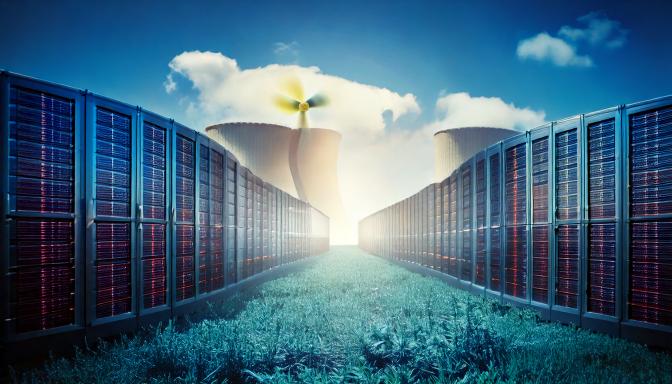Amazon Follows Google’s Nuclear Plan with Energy Deal of Its Own
In strategic planning to meet the growing energy demands of data centers, Amazon announces its partnership with nuclear energy firm X-energy to power its data centers using small modular reactors (SMRs). With this transition, Amazon joins Google in exploring nuclear power as an alternative to renewable sources. The goal is to ensure a stable energy supply that aligns with the round-the-clock needs of data centers, particularly as artificial intelligence (AI) advancements drive energy consumption higher.
What’s Happening & Why This Matters
Data centers consume vast amounts of energy, and with AI increasing demand, tech companies like Amazon are seeking stable, reliable energy sources. While renewables remain cost-effective, their intermittent nature poses challenges for energy-hungry facilities like data centers. In contrast, nuclear power offers a constant supply of electricity, making it a valuable solution to power demands while helping meet environmental goals by reducing reliance on fossil fuels.
X-energy’s small modular reactors use TRISO (TRi-structural ISOtropic) fuel, composed of uranium and graphite wrapped in a ceramic shell for extra safety. This design ensures that even if a reactor loses control or power, it will not overheat or release hazardous materials. X-energy’s reactors operate at high temperatures, using helium to generate steam and electricity, with each unit capable of producing up to 80 megawatts (MW) of electricity. When combined, four reactors can generate up to 320 MW, providing a scalable power solution adaptable to Amazon’s needs.
The current energy blueprint has pushed Amazon to consider nuclear options. Traditional renewable sources, while effective in reducing emissions, cannot consistently power facilities requiring steady, uninterrupted energy. As data center demands grow and efficiency gains flatten out, new renewable installations are often forced to meet increased demand, which slows down progress toward climate goals. Nuclear energy, especially via SMRs, offers a dependable alternative, keeping emissions down without compromising on power reliability.
TF Summary: What’s Next
Amazon’s venture into nuclear energy marks a new trend among tech giants facing rising energy demands. While SMRs like those from X-energy await full approval from the Nuclear Regulatory Commission, the interest from Amazon and Google signifies an industry shift to sustainable energy. If successful, nuclear-powered data centers may become an industry standard, balancing energy needs with climate commitments and long-term sustainability goals.
— Text-to-Speech (TTS) provided by gspeech


